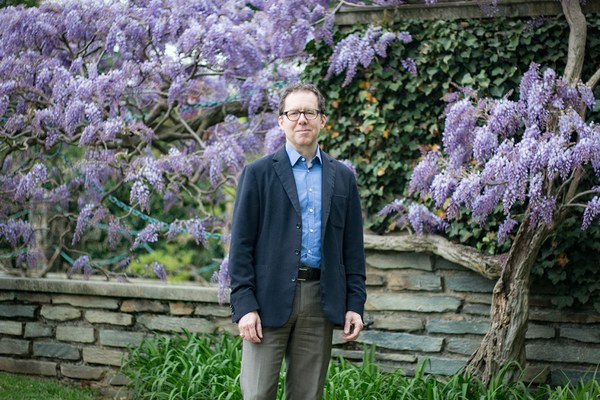Michael Lee, Reuben McCorkle Rainey Professor in the History of Landscape Architecture at the University of Virginia, is a fellow in Garden and Landscape Studies. His recent research report, “German Landscape and the Aesthetics of Administration: Peter Joseph Lenné and His Circle, 1815–1848,” detailed the advances and influences attained by Lenné in the post-Napoleonic period.
Q&A with Michael Lee
Lenné, as you mentioned, produced elaborate plans that blended art and schematics. Tell us more about these.
The tradition that Lenné and others of his generation were working in is often referred to as the picturesque. By the late 18th century, theorists were beginning to argue that what distinguished garden art from, say, landscape painting, which seemed to follow very similar compositional principles, was the fact that garden art required you to string together a whole succession of these individual, picturesquely composed scenes into some larger whole. Landscape painting, in contrast, was simply taken from one point of view.
So the composition of gardens came to be viewed as a kind of displaced unity. There’s no way you could physically see all these framed views at one time; you had to walk or stroll through the garden, and then, in the imagination, produce a synthesis of that immersed experience. One of the fascinating things about the landscape garden and garden art movements in this period is that they were trying to work out, on a technical as well as theoretical level, how to do this. Lenné was one of the people who seized the opportunity to experiment, grounding the succession of scenes in a much more technically sophisticated way of working, which relied heavily on surveying. That’s why he preferred to use plan views as opposed to perspectival or painted views when working. It’s a way of translating real conditions onto paper, working in that medium as a form of representation, and then projecting it back onto the real landscape.
You talked about this method as a way of bridging the nature-artifice dichotomy, but how did that manifest in the actual garden?
I think one of the most important points to be made is the way Lenné and his circle were thinking about the integration of technology into the landscape. They were among the first people in Europe to use steam engines in parks and gardens to run fountains and for irrigation. People had already been using steam engines to pump water out of mines, but starting around 1820 a whole series of steam engines were installed throughout the Potsdam parks, each one of which was housed in a building that had been designed to be part of the scenery. So for the estate at Klein-Glienicke the building was made to look like an Italian farmhouse; the building at Sanssouci looks like a mosque, etc. The idea was to use technology to make nature flourish, to produce more than it could on its own. Nature and artifice weren’t really seen as antithetical.
Talk a little about Lenné’s concept of a green ring surrounding Berlin.
Berlin’s population had more than doubled in the space of only twenty years, which obviously presented social, economic, and environmental problems for the city. Around the periphery of the core of the city, which is quite old, you had this hodgepodge of tenements, factories, all kinds of establishments, with no urban planning behind it whatsoever. After 1840, Lenné was brought in by Friedrich Wilhelm IV to help guide the expansion of the city. Growth was inevitable, so the question became, how do we make it happen in a productive and sensible way?
Lenné’s strategy was basically to provide a belt around this zone of expansion, not necessarily to contain it, but to give some sense of order to this unruly perimeter. He chose to create a series of landscape interventions—gardens, military exercise areas, a series of smaller parks—all of which were connected by carriageways lined with trees, what we today might call parkways or greenways. The heart of the idea was that you could actually traverse the entire perimeter of the city without leaving a green environment. What Lenné couldn’t envision was how much more Berlin was going to grow, and also how new technologies of infrastructure would adversely affect his project. Even shortly after the ring was built, it was already being partially dismantled, especially as railroads came in from the southwest. Actually, today, some of the most interesting parks in Berlin are on that former railroad yard land; they’ve been reclaimed in the last ten years or so. So, in a way, Lenné’s idea is being resurrected, but in a very different form.

